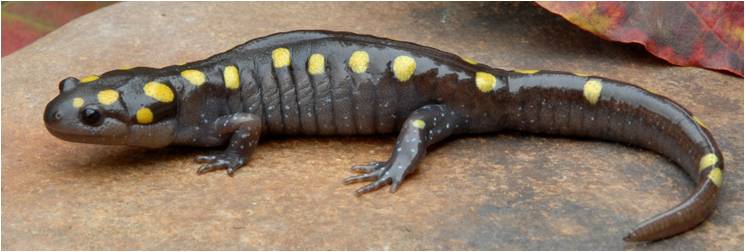Interactions
-
Predation
The spotted salamander is considered a predator because of its carnivorous lifestyle. Even as a larvae or tadpole it eats mainly other animals and zooplankton. Adults prey on a wide variety of insects, baby rodents, and other amphibians. -
Prey
The spotted salamander has many predators it needs to be wary of in both the larval and adult stages. These include: fish, otters, muskrats, other amphibians, snakes, turtles, raccoons, birds, and humans. Spotted salamander larvae will tend to hide together in clumps at the bottom of a pond, blending in with the substrate when a predator is detected. When they are not under threat, the larvae can become quite predatory themselves.
One of the most significant predators to amphibians in general are humans. Our expanding cities and industries are taking over more of their aquatic habitat. Luckily spotted salamanders arn't very affected yet, due to their resilient nature, but someday soon, they too will become endangered. -
Life Style
After they grow into their adult form, the salamanders will leave the pond, usually on a wet night, in search of new places to hide. They usually end up under rocks, fallen trees, and in other animals' abandoned burrows. This species is not believed to be a very strong digger, which is why they will commonly just modify already existing burrows. Adult salamanders are fairly sedentary. They move as little as possible while searching out prey. They will eventually emerge from their burrows if food runs short, and even then only if it’s a dark wet night.
Visit
Caudata.org to
learn more about salamander conservation
Come check out fun
facts about the spotted salamander!
Go Back to
Home
